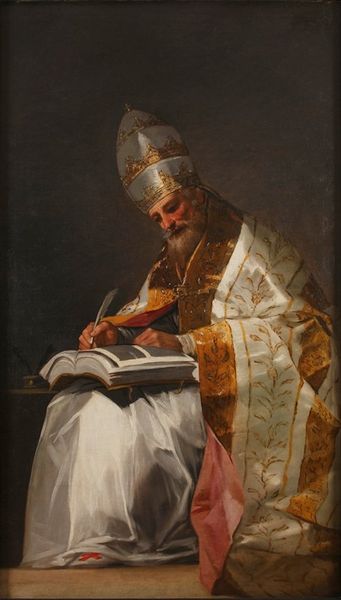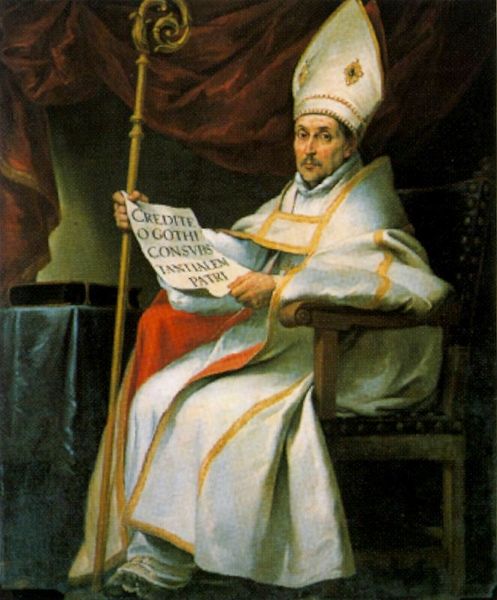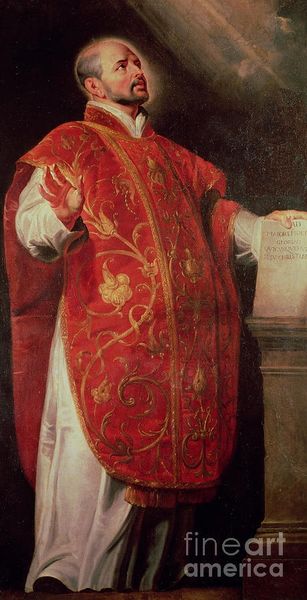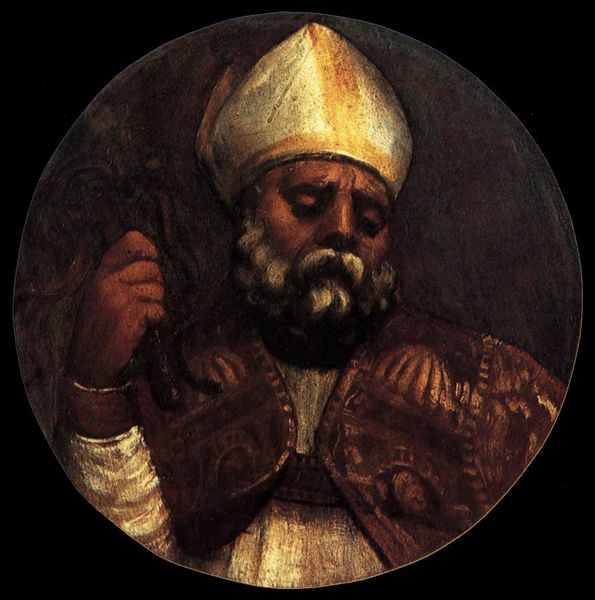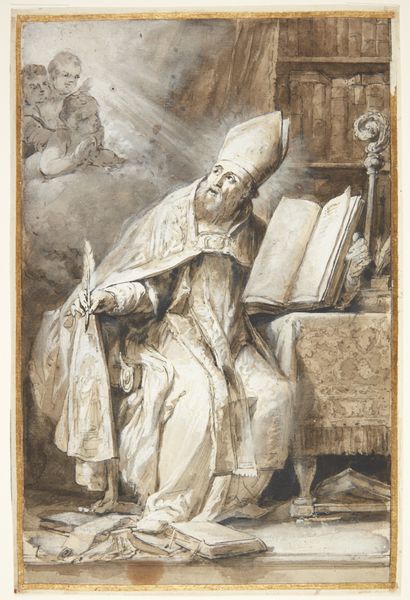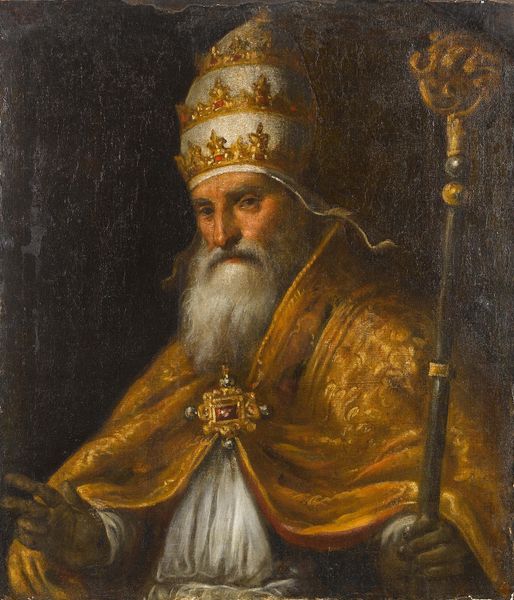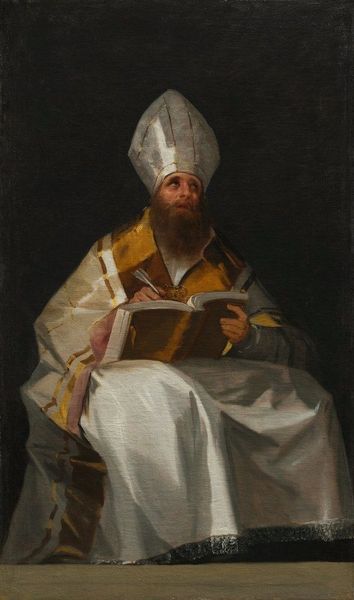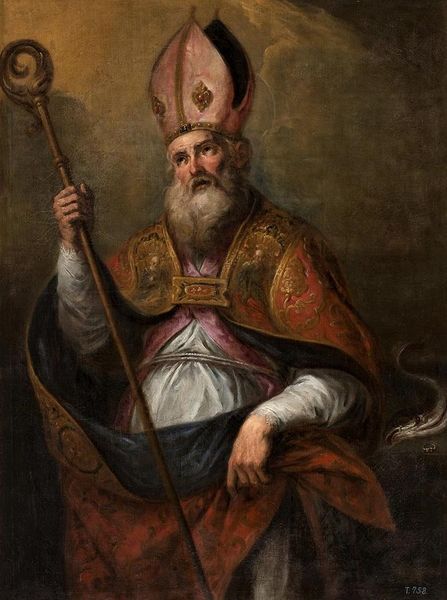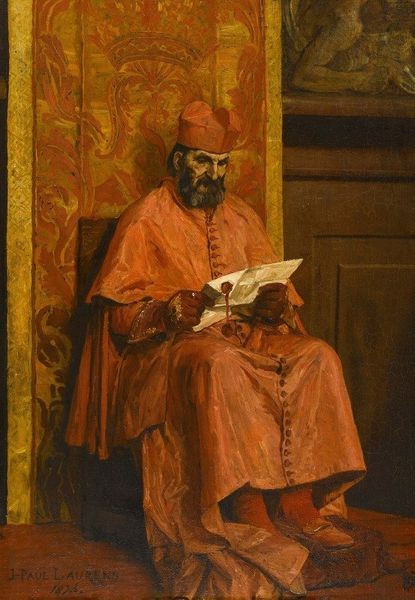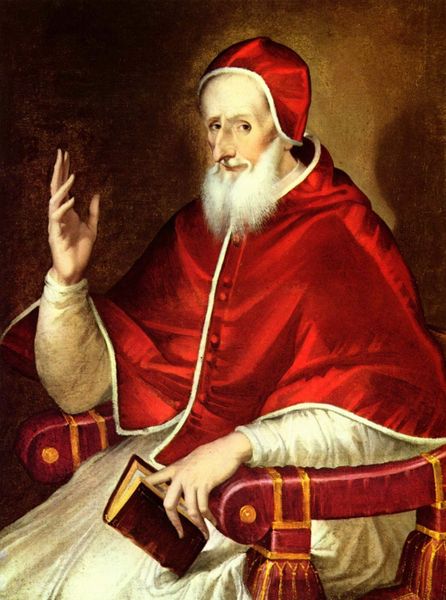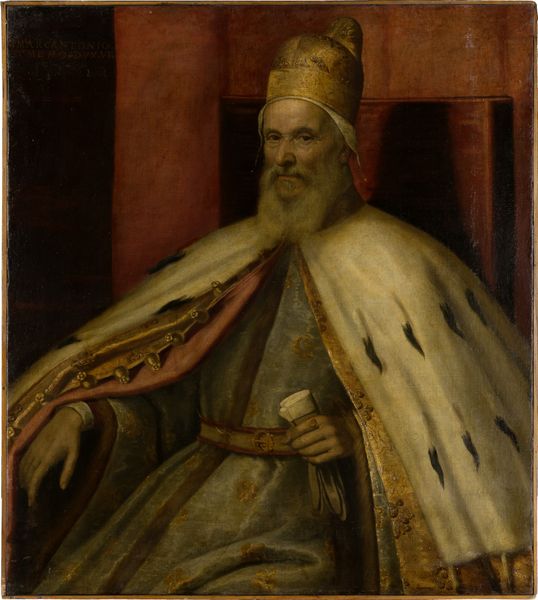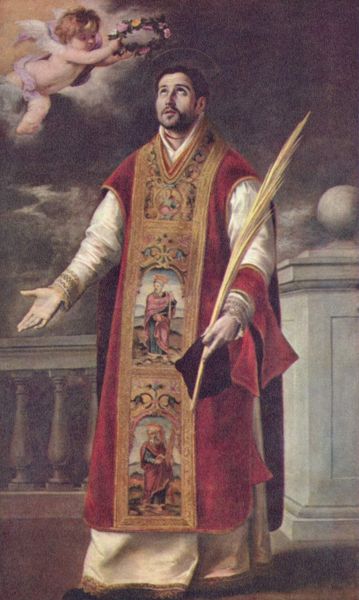
#
portrait
#
charcoal drawing
#
possibly oil pastel
#
oil painting
#
portrait reference
#
famous-people
#
male-portraits
#
acrylic on canvas
#
portrait head and shoulder
#
underpainting
#
portrait art
#
fine art portrait
#
digital portrait
Dimensions: 190 x 115 cm
Copyright: Public domain
Curator: Welcome. Before us is Francisco de Goya’s "St. Gregory the Great," created in 1797. Editor: My initial impression is of intense concentration. The play of light on the Saint's face and the shimmer of his robes are exquisite. The somber palette amplifies the sense of scholarly devotion. Curator: Indeed. Goya crafted this portrait while serving as a court painter. It reflects the complexities of representing power and piety within the context of the Spanish monarchy and its relationship with the Church. He's straddling the line between divine authority and human frailty. Editor: Looking closer, I'm fascinated by the textural contrasts. The rough, almost sketch-like quality of the background sharply juxtaposes with the intricate detail in the Saint's attire. What kind of material manipulations are we seeing here? Is it purely oil? It feels mixed. Curator: Well, Goya employed a variety of techniques in his portraits. Here we see layering, probably oils, to achieve a richness in surface. The clothing especially invites examination, with brocades rendered with striking efficiency and almost a modern looseness. Consider the role of the workshop in producing such garments. What level of craftsmanship went into constructing the garments? How might that impact our understanding of the artwork's place within a larger economy? Editor: It’s powerful how Goya captured the dignity and weight of authority vested in St. Gregory. The very image serves a sociopolitical function—reinforcing the Church’s dominance. Is it intended more as an exercise in devotion or strategic communication on the Church’s behalf? Curator: The power of images during this era cannot be understated. They functioned as tools of legitimation. What I find intriguing is the negotiation of materials and social messaging that Goya stages here. Editor: I agree. Analyzing the painting through this lens is essential to grasping its enduring relevance. It reveals more than the surface level representation. Curator: It provides insights into both material practice and social power. It showcases how a painting can serve as both a record and an instrument of history. Editor: Exactly. Goya offers a rich case study to comprehend those complicated intersections. Curator: Precisely.
Comments
No comments
Be the first to comment and join the conversation on the ultimate creative platform.
